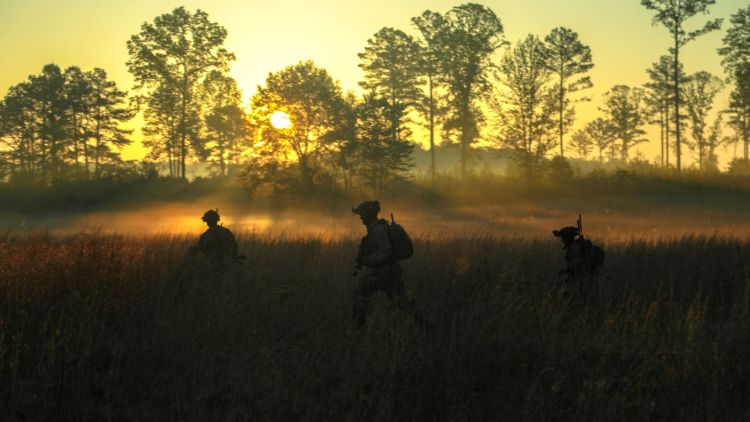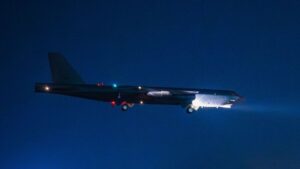The US Army’s 3rd Brigade Combat Team, 10th Mountain Division, is on a mission to reinvent itself as part of a broader effort known as “Transforming in Contact.”
This initiative, as reported last week, is all about making brigades lighter, faster, and more agile on the battlefield.
For the 3rd Brigade, also called the “Patriots,” this means everything from experimenting with new tech to overhauling organizational structure.
Let’s take a look at what this transformation actually looks like on the ground and why it matters.
A New Kind of Brigade
So, what does it mean to be a “light brigade combat team“?
Essentially, it’s about stripping down traditional setups to create a formation that can move quickly and respond in real-time to threats on the battlefield.
For the Patriots, this transformation has led to some big changes. One of the major adjustments involves decentralizing their sustainment support battalion.
By doing this, the brigade aims to reduce the risk of enemy detection and fire—a crucial advantage when speed and stealth are key.
The US Army’s 3rd Brigade Combat Team, 10th Mountain Division, is on a mission to reinvent itself as part of a broader effort known as “Transforming in Contact.”
This initiative, as reported last week, is all about making brigades lighter, faster, and more agile on the battlefield.
For the 3rd Brigade, also called the “Patriots,” this means everything from experimenting with new tech to overhauling organizational structure.
Let’s take a look at what this transformation actually looks like on the ground and why it matters.
A New Kind of Brigade
So, what does it mean to be a “light brigade combat team“?
Essentially, it’s about stripping down traditional setups to create a formation that can move quickly and respond in real-time to threats on the battlefield.
For the Patriots, this transformation has led to some big changes. One of the major adjustments involves decentralizing their sustainment support battalion.
By doing this, the brigade aims to reduce the risk of enemy detection and fire—a crucial advantage when speed and stealth are key.
Another significant change is the formation of three “strike companies” within the brigade. These aren’t your typical units; they include everything from ground scouts to unmanned aerial weapons, as well as electronic warfare and counter-drone teams.
This isn’t just restructuring for the sake of it. The new setup is designed to tackle the demands of modern warfare, where threats are as likely to come from a rogue drone as from enemy infantry.
Testing New Gear and Tactics in Europe
Right now, the Patriots are stationed in Europe, where they’re working closely with NATO allies. They’re not just training—they’re also experimenting.
As part of this transformation, the brigade is getting access to new tech and equipment that they’ll have a chance to put to the test during an upcoming training rotation in Bavaria.

One of the key pieces of equipment is the Infantry Support Vehicle (ISV), a nine-seat utility vehicle designed to help troops cover complex terrain quickly.
According to Col. Joshua Glonek, commander of the 3rd Brigade, these vehicles are game-changers, providing mobility that light infantry units have never had before.
“That’s going to provide some really enhanced mobility for us, allow us to reposition troops, and equipment on the battlefield very rapidly in ways that light infantry formations haven’t been able to do over the ground up to this point,” Glonek explained.
Learning from the 101st Airborne Division’s Experience
The Patriots aren’t alone in this transformation. The 2nd Brigade Combat Team, 101st Airborne Division—known as the “Screaming Eagles“—has also been adapting to this light brigade model.
The Screaming Eagles completed intense training at the Joint Readiness Training Center and conducted a 21-day exercise called Operation Lethal Eagle.
Their experience has been invaluable, and the lessons they learned about mobility, tech, and battlefield agility are now helping the Patriots refine their approach.
One thing the Screaming Eagles tested heavily was drone technology.

By using drones and electromagnetic decoys, they found effective ways to draw enemy fire away from their main force.
They also experimented with networked communication systems that made it easier to coordinate across the battlefield.
Now, those tactics and technologies are being shared with the Patriots as they prepare for their own training.
A Smarter, More Mobile Army
This isn’t just about a few brigades trying out new gadgets and strategies.
Transforming in Contact is a sweeping initiative across the Army aimed at preparing for large-scale operations.
The goal is to make American forces lighter and more responsive, ready to operate effectively across multiple domains—land, air, and cyber.
The Patriots are just one of three brigades participating in this first phase, alongside the 2nd Brigade Combat Team, 101st Airborne, and the 2nd Light Brigade Combat Team, 25th Infantry Division. Each of these units is adapting and testing new approaches, then sharing their findings so the Army can keep refining its tactics.
What’s Next?
The Patriots are preparing for a rotation at the Joint Multinational Readiness Center in Bavaria in January, where they’ll put their new structure and tech to the ultimate test.
There, it will assess the effectiveness of this new structure, and real-time feedback will play an important role in future Army decisions.
If something doesn’t go as planned, the Army wants to know right away so it can make changes.

Beyond these brigades, the initiative is set to expand even further.
Army Chief of Staff Gen. Randy George recently announced that phase two, launching in fiscal year 2025, will bring in entire divisions and other specialized units like armored and Stryker brigades. Even the National Guard and Army Reserve are expected to join the transformation.
Why This Matters
The “Transforming in Contact” initiative shows just how seriously the Army is taking the need to innovate and evolve.
“Everything we do [with transforming in contact] is grounded in one simple principle and that is increased lethality for our formations,” Maj. Gen. Joseph Ryan, Department of the Army assistant deputy chief of staff, stated.
By rethinking the way brigades are organized, integrating cutting-edge technology, and empowering soldiers to adapt on the go, the Army is setting the stage for a new era of warfare.
The Patriots’ journey isn’t just about change for the sake of change. It’s about creating a smarter, faster, and more adaptable force that can respond to the unpredictable nature of modern battlefields.
As the initiative continues to roll out, the lessons learned by the Patriots, the Screaming Eagles, and other units will shape the future of the entire US Army.



